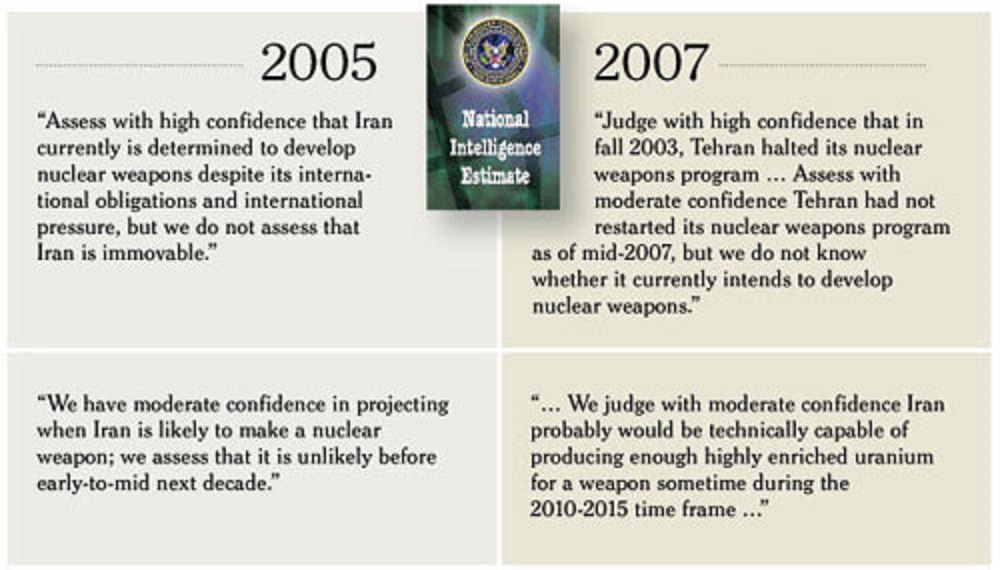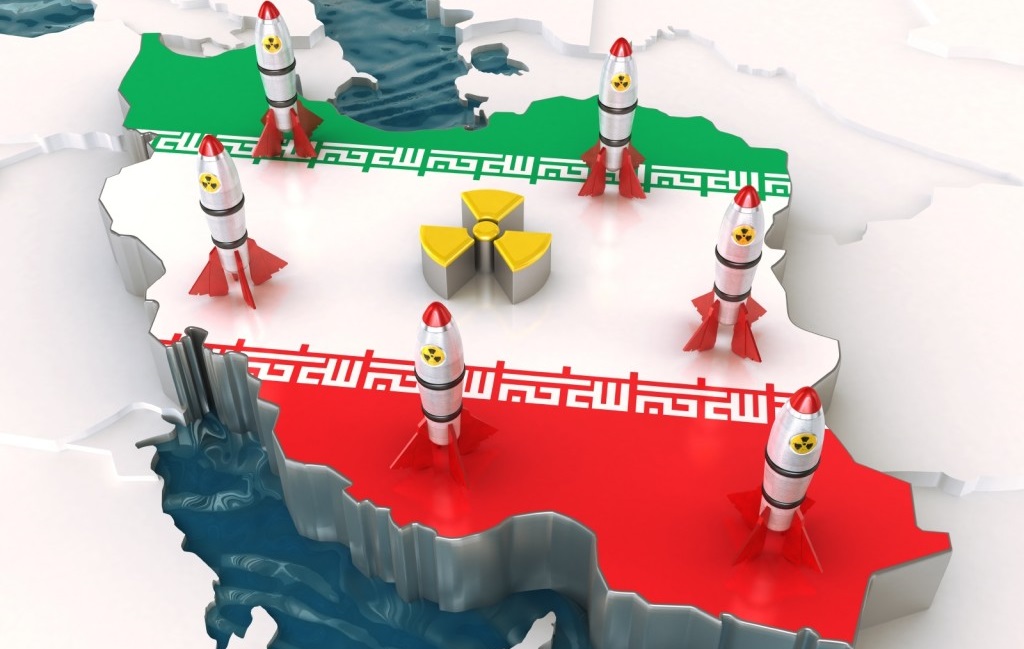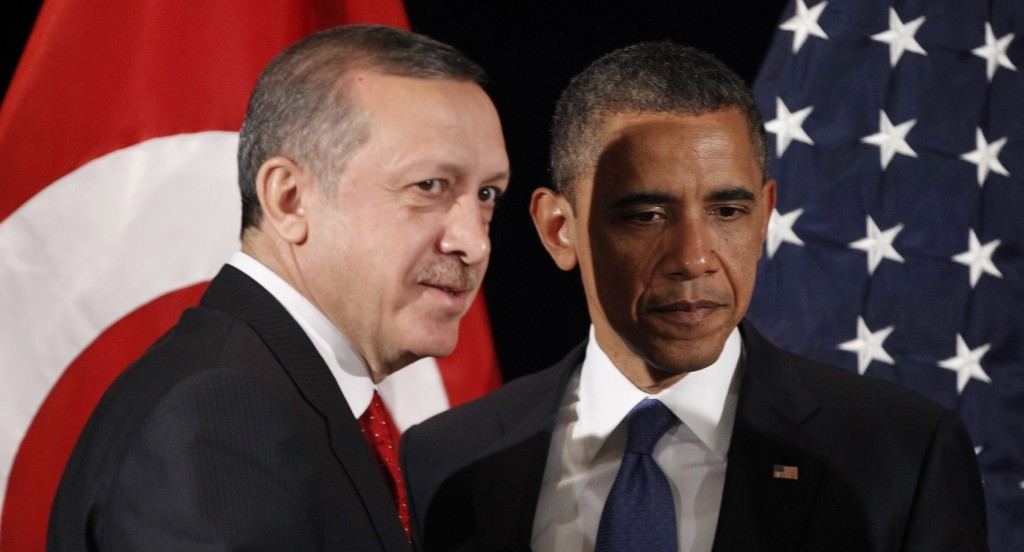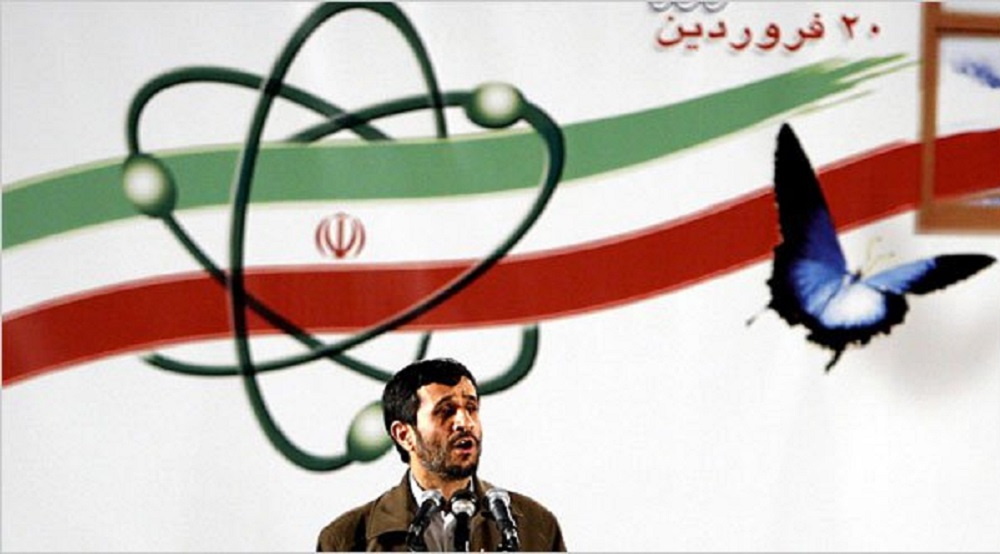Betrayal or Deception (The National Intelligence Estimate)
They must be celebrating in Tehran. On December 3rd, and in direct opposition to the conclusions drawn from Israeli intelligence sources, a National Intelligence Estimate concluded that Iran had halted its nuclear weapons program in 2003 with no evidence to suggest it had re-started it (although, as Walid Phares of the Foundation for the Defense of Democracies points out: “stopping a single producttion process of a nuclear weapon is not equivalent to putting an end to a strategic policy of obtaining such arms”). “Tehran at a minimum is keeping open the option to develop nuclear weapons,” says the summary’s second sentence, while expressing only “moderate confidence” that Tehran has not re-started its military program.
The report says “with high confidence” that Iran did have a secret nuclear weapons program and that it stopped only after it got caught and was threatened with international punishment in 2003 (specifically, an invasion similar to that of Afghanistan and Iraq).1 Presenting the NIE Report, Bush’s national security adviser Stephen Hadley said: “The estimate offers ground for hope that the problem can be solved diplomatically without the use of force, as the administration has being trying to do.” The President followed up with calls to world leaders and held a White House news conference to argue that the new National Intelligence Estimate only reinforces the need for more diplomatic pressure against Iran. Bombing Iran, it seems, is now off the table and sanctions against Iran can also be expected to dissipate. After all, why punish Iran if it’s not going for the bomb?
On the face of it, it appears to be a betrayal of Israel that is on the frontlines and has consistently argued that Iranian nuclear intentions are military not civilian and that Iran will possess nuclear capability at some point during 2009. It is also a humiliation for an administration that has repeatedly argued that Iran is actively pursuing a nuclear weapons program. As Robert Baer writes: “The Bush Administration has finally concluded Iran is a bridge too far.”
There is also the distinct possibility that the information leading to this erroneous report was the product of disinformation planted by a yet-to-be-uncovered Iranian double-agent theoretically working for U.S. intelligence, but in fact providing false information from Iranian intelligence designed to mislead U.S. policy makers. Unfortunately, there is a wealth of historical precedent for such deception.
The Samson Blinded blog suggests the U.S. did a deal with Iran, in which Iran wound down its support for terror in Iraq – in return for which the U.S. promised not to bomb Iran, while British intelligence is of the view that the U.S. has been the victim of an Iranian-inspired campaign of disinformation, but in truth, we will never know. We do know, however, that Iranian President Ahmadinejad has already called it “a victory” for the Iranian nation. If he’s right; if they’re all right, then we are fools. In the contest for influence between U.S.-backed liberal democracy and the champion of radical Islamism (Iran), guess who has just emerged as the strong horse and who the weak horse? The Saudis have pretty well figured it out. Doubtless the Israelis have too, assuming the NIE Report is for real.
If so, there is good reason to conclude that it is seriously flawed. After all, the distinction between Iran’s “military” and “civilian” programs is highly artificial, since the enrichment of uranium, which all agree Iran is continuing, is critical both to civilian and military uses and both aremain controlled by the radical Iranian Revolutionary Guards. As John Bolton argues in the Washington Post: “The 2007 NIE is internally contradictory and insufficiently supported. It implies that Iran is susceptible to diplomatic persuasion and pressure, yet the only event in 2003 that might have affected Iran was our invasion of Iraq and the overthrow of Saddam Hussein.” Besides, the U.S. intelligence community has a poor track record regarding nuclear weapons programs and has made many incorrect judgments on some of the most critical proliferation cases of our time including Iraq, Libya, North Korea and, of late, Syria – not to mention the events leading up to 9/11. In fact, the Report itself appears to be based on a single Iranian source who provided information to a foreign intelligence agency and has not been interviewed directly by the U.S..
Nevertheless, if the conclusions of the NIE are genuine, it now appears increasingly improbable that there will be any U.S. military action against Iran in the foreseeable future. Worse, the implications of the Report suggest that Israel will be left to deal with Iran and the radical Islamic wave sweeping through the Middle East – and if that should happen, it can be expected to be subject to international censure far worse than it experienced when it bombed Iraq’s Osirak reactor in 1981 � that is, unless the NIE itself is part of some elaborate deception plan designed to lower the guard of the mullahs.
A theory? Certainly. An unfounded theory. I think not. After all, both the Gulf Arabs and Israel are consumed by the probability (not possibility) that Iran will go nuclear, NIE or no NIE, and neither can be expected to sit back (or let America sit back) and allow that to happen. The Saudis may be holding hands with Ahmedinejad (as they did recently in Doha), but both the Saudis and Israelis are convinced that he’s a rabid dog that must be eliminated. Israel, for its part, whether in coalition or on its own, cannot and will not ever allow Iran under the mullahs to acquire nuclear weapons.
Besides, the facts overwhelmingly suggest that Iran is still pursuing nuclear weapons for military purposes. Therefore, despite the NIE Report, a U.S.-sponsored campaign of deception cannot be dismissed.
Believing Ahmedinejad
As Gerard Baker wrote recently in the Times of London: “Those who say war with Iran is unthinkable are right. Military strikes, even limited, targeted, and accurate ones, will have devastating consequences for the region and for the world. There are many fearfully powerful arguments against the use of the military option. But multiplied together, squared, and then cubed, the weight of these arguments does not come close to matching the case for us to stop, by whatever means may be necessary, Iran from becoming a nuclear power.”
Born to a blacksmith, educated as a revolutionary, trained as a killer and attacked as a mystical fanatic, Iranian President Mahmoud Ahmadinejad is the personification of everything there is to fear about a nuclear Iran. He has stated, not once but on many occasions, and not privately, but publicly in many world forums, that Israel is a cancer that will be “wiped off the map”, that “the Holocaust was a myth”, and that “if there is to be a Jewish State, it should be in Europe or Alaska.”
The religious ideology of the Islamic republic is tied to the belief that Iran’s Supreme Leaders (Ayatollahs Khomeini and later Ayatollah Ali Khamenei) are just temporary guides pending the return of the Imam Mahdi who vanished more than a thousand years ago. Ahmadinejad has linked himself to a mystical movement that believes the way must be prepared (through Armageddon) for the return of the Mahdi and that is precisely what he is doing.
Nor are his threats new. Several years ago, Iran’s former President Rafsanjani stated that “the use of a nuclear bomb in Israel will leave nothing on the ground, whereas it will only damage the world of Islam” (showing an appalling ignorance of the ramifications that would necessarily flow from a nuclear exchange). And speaking to Hamas leaders recently in Damascus, Ahmadinejad confirmed that the Middle East conflict, for the Islamic government of Iran, has become “the locus of the final war” between Muslims and the West.
So why should we take this Iranian rhetoric seriously? Because, such rhetoric comes from the same Islamic regime that, twenty years ago, sent Iranian children scurrying across Iraqi minefields with yellow plastic “keys to Paradise” made in Taiwan hanging around their necks. Thousands were sacrificed as “martyrs for Allah.” While many may not believe that Ahmedinejad intends to carry out his threat (by the way, the world didn’t believe Hitler in Mein Kampf or Saddam Hussein’s stated intentions to invade Kuwait either), the Israelis, the Saudis and (I suspect) even American intelligence are convinced that he does. A “balance of terror” deterrence philosophy may have worked during the Cold War, but we live in the post-Cold War era and the Iranian mullahs are not the Communists.
Follow the Evidence
There is certainly sufficient evidence to support the fact that Iran is pursuing a nuclear weapons program with a vengeance. Even now, Tehran’s scientists are working to master the skills to make nuclear fuel – the hardest part of building a weapon. The Iranians have brought in Russian, Chinese, Pakistani, and North Korean technology to develop a nuclear weapons infrastructure that far surpasses their need for civilian energy. They have broken the seals on their critical nuclear reactors, announced that they have attained nuclear fission production capability and made fools of IAEA inspectors (not to mention the Europeans and Americans).
So is Israel spinning tales about Iran�s nuclear plans? The evidence strongly suggests otherwise. Beginning with the August 2002 announcement by the Iranian opposition group, the National Council of Resistance of Iran (NCRI), it was clear that Iran had concealed a clandestine nuclear weapons program for the preceding fourteen years. Satellite imagery has confirmed a conversion plant at Isfahan, uranium enrichment facilities at Natanz, a plutonium/heavy water processing center at Arak 2, a uranium hexafluoride gas (a critical component in nuclear weapons production) production site near Isfahan in central Iran and many other sites throughout the country, and the Iranians were none to happy about our knowledge of them.
After the NCRI revealed the existence of the Lavizan laser enrichment site near Tehran in 2004, a full year after the NIE now says Iran’s nuclear weapons program supposedly ended, the regime razed the site to the ground, removed the topsoil and every single tree in the vicinity in order to conceal any trace of radioactivity (as the Syrians did recently after the Israeli air strike on their nuclear facility on September 6, 2007). All equipment from that site was moved to a new site at Lavizan II, where the laser enrichment activity resumed.
Agence France-Presse then reported that in 2005, Iran bought eighteen Russian SS-N-6 ballistic missiles from North Korea. What’s notable about these missiles is that they were specifically designed to carry one megaton nuclear warheads. As the online Intelligence newsletter NightWatch reported: “Curious minds want to know why Iran would buy such a system from North Korea in 2005 if it abandoned its nuclear warhead program in 2003?”
In fact, just last month, the IAEA issued a report criticizing Tehran for providing “diminishing” information and access to its current program. According to Clare Lopez, writing in the December 4, 2007 issue of Middle East Times: The International Atomic Energy Agency (IAEA) 2004 discovery of polonium inside Iran also would suggest strong evidence that Iran was involved well past 2003 in the production of trigger systems for nuclear warheads. Corroboration of the IAEA’s findings came from the NCRI, which detailed an ongoing program of polonium and berylium acquisition by Iran. There are simply no other credible uses for these rare and expensive isotopes than warhead triggers. Even more recently, the November 2006 death of former KGB officer Andrei Litvinenko by self-ingested polonium blew the lid off a polonium smuggling operation that transited through London en route to Iran and other end users, including al-Qaeda and the Chechens.”
And in early December 2007, the Iranians successfully tested a new multi-stage, solid fuel inter-continental ballistic missile, the Ashoura. With a range of 1,240 miles, it can target most of Europe which would not be of such concern except for a report issued on February 16, 2006 from the Middle East Media Research Institute (MEMRI) wherein the reformist Internet daily Rooz reported for the first time that extremist clerics from Qom had issued what the Daily called “a new fatwa” stating that “shari’a (Islamic law) does not forbid the use of nuclear weapons”..and during the past year, a period when Iran’s weapons program was supposedly halted, the government has been busy installing some 3,000 gas centrifuges at its plant at Natanz. These machines, if operated for a year, could produce enough uranium to fuel a bomb.
The Israeli Factor
Notwithstanding the NIE Report, there is little doubt within Israeli intelligence circles that Tehran’s goal is to confront the world with an irreversible nuclear fait accomplis and to use its nuclear shield to exert Iranian Islamic hegemony throughout the region. Secure behind that nuclear shield, it will accelerate its campaign of terror around the world by proliferating weapons of mass destruction to its international terrorist affiliates. Worse, it will ignite a nuclear arms race in Egypt, Saudi Arabia and Syria, each of which has been working diligently for the past several years to develop its own nuclear capability. Had Saddam Hussein delayed his invasion of Kuwait until he resurrected his damaged nuclear program, Kuwait would now be an Iraqi province and perhaps Saudi Arabia as well. Weapons of mass destruction controlled by the world’s least stable and most erratic dictatorial and Islamic regimes would be a recipe for Armageddon.
Given these fears, Israel has spent the past five years preparing for a worst case scenario with American assistance. Taking the position that it is better to be safe than sorry, in September 2003, Israel’s foreign intelligence service (Mossad) began reorganizing its international infrastructure by enhancing its “Delta-Force” capabilities suggesting not only sabotage but regime change as well. In early 2005, a fresh shipment of F-15I and F-16I long-range strategic bombers arrived in Israel (including a separate shipment of ‘bunker-buster bombs’ from the U.S.). These bombers are capable of traveling well over a thousand miles without refueling – an absolutely critical strategic necessity if long-range targeted bombing in Iran is undertaken. In August 2006, Jane’s Defence Weekly noted the Israeli purchase of several new Dolphin-class diesel submarines from Germany each having both stealth capability and the ability to launch tactical nuclear missile payloads at hardened targets. Israel has also perfected its Ofek satellite technology and its Arrow II anti-ballistic missile defense system using every existing missile in the Iranian arsenal as “targets.” Further, in February 2007, Israel began negotiating with the U.S. for an �air corridor� over Iraq – a corridor that would allow Israeli warplanes to be painted as �friendlies� by U.S. forces thereby protecting them from American ant-aircraft fire during a bombing raid over Iran, while the Persian Gulf remains awash with high-tech American warships of every class awaiting further instructions……and now the American intelligence community would have us believe that they’re no longer certain that Iran has continued its nuclear weapons program after 2003 and that the Bush administration believes that a diplomatic and sanctions offensive is the way to deal with the mullahs.
Sorry. I just don�t buy it. America�s intelligence agencies must know that, one morning, we will all wake up to a nuclear Iran unless regime change is on the agenda. Is it a cost-benefit approach for one of the world’s largest oil exporters to withstand international sanctions and economic ruin for the sake of a peaceful nuclear program? Are we now to believe that all Iran’s secret nuclear efforts, threats to annihilate Israel and funding global Islamic terrorist organizations for the past five years have been because of their determination to create more electrical power for Tehran? Are we now to sleep easy because Iran is no longer a threat? Sixteen separate U.S. intelligence agencies just couldn�t be that naive. Something’s wrong with this picture.
ENDNOTES
-
Israel and others have argued that in 2004, an election year, the anti-war movement in the U.S. was seen by the Iranian mullahs as an opportunity to relaunch their nuclear weapons program while America was distracted by Iranian-inspired terrorism in Iraq and the anti-war movement at home.
-
This reactor is ideal for producing plutonium for nuclear bombs, but is of little use in an energy program like Iran’s, which does not use plutonium for reactor fuel.




